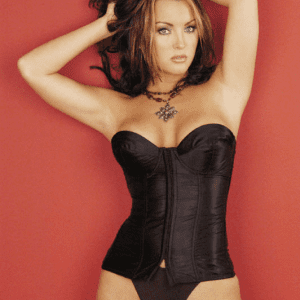
The 1980s were a transformative decade that left an indelible mark on pop culture. From the bold fashion statements of power dressing to the emergence of innovative “eatertainment” concepts, the decade was a cornucopia of trends that continue to influence our world today.
The 1980s saw a dramatic shift in women’s fashion, particularly in the workplace. Known as “power dressing,” this trend was characterized by oversized double-breasted suits, shoulder pads, and floppy silk ties. Women adopted masculine-inspired fashions to express their growing influence in professional environments.
Icons like Princess Diana, corporate business women, and designers such as Giorgio Armani and Calvin Klein popularized this look. Movies like “9 to 5” and TV shows like “Dynasty” showcased strong female characters embracing power dressing, reflecting the increasing participation of women in the labor force.
The concept of ‘entertainment’ emerged in the 1980s, blending dining with entertainment. This trend was epitomized by establishments like Chuck E. Cheese, founded by Atari co-founder Nolan Bushnell.
These venues combined pizza with video games and animatronic shows, creating a family-friendly environment. Other notable examples include Dave & Buster’s, an arcade/sports bar/restaurant, and Medieval Times, a dinner theater featuring jousting contests and medieval-themed shows. These venues offered a unique dining experience, making food a central part of entertainment.

The launch of MTV in 1981 revolutionized the music industry by introducing the world to music videos. MTV’s 24-hour music video channel provided a platform for artists to reach a broader audience through visual storytelling.
Iconic artists like Michael Jackson, Prince, and Madonna used music videos to enhance their music’s appeal, creating memorable visual experiences. Shows like “Yo! MTV Raps” brought hip-hop culture to the mainstream, and the annual Video Music Awards recognized music videos as a new art form. MTV’s influence extended beyond music, impacting fashion and pop culture.
Shopping malls became pop cultural trends hubs in the 1980s, with food courts playing a pivotal role. These open-plan areas offered a variety of fast-food options, allowing shoppers to refuel without leaving the mall.

Pioneered by developer James Rouse, food courts became a staple of suburban culture. Popular chains like Orange Julius, Sbarro, Panda Express, and Auntie Anne’s thrived in these settings. Food courts provided a communal space for people to gather, eat, and socialize, becoming a central part of the mall experience.
The 1980s were marked by several toy crazes that captured the public’s imagination. Cabbage Patch Kids, introduced in 1983, sparked near-riots as parents scrambled to buy these unique dolls. Other popular toys included Transformers, the Rubik’s Cube, and Teddy Ruxpin. These toys often sold out quickly, leading to frenzied shopping scenes and high demand. The toy industry saw significant growth during this decade, with these crazes becoming a defining aspect of 1980s pop culture.

The 1980s were a transformative decade, marked by bold fashion, innovative entertainment, and cultural phenomena that left a lasting legacy. From the rise of power dressing and ‘eatertainment’ to the visual impact of MTV, bustling mall food courts, and toy crazes, these trends not only defined the era but also paved the way for future innovations. The ’80s remain a nostalgic and influential period in pop culture trends.


